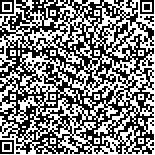| 摘要: |
| 目的 乡村旅游在发展中兼具共性与个性,对黄河流域乡村旅游发展模式的探索有助于推进乡村振兴、实现黄河流域高质量发展。方法 文章以黄河流域9省(区)中国美丽休闲乡村和全国乡村旅游重点村为研究对象,运用ArcGIS 10.7、Excel 2021、Nvivo 12、fsQCA 3.0软件分析乡村旅游点空间分布特征、评估乡村旅游网络关注度、提炼乡村旅游发展要素、归纳乡村旅游发展模式。结果 (1)黄河流域乡村旅游点在空间上呈集聚分布,核密度较高区域呈“Z”字型结构;(2)黄河流域乡村旅游网络关注度水平较高,但9省(区)差异显著;(3)黄河流域乡村旅游发展包含产业共富、党建引领、教育筑梦、资金助力、科技开拓、人才带动、生态涵养、体育盘活、文化赋能和艺术助推10种核心范畴;(4)单一核心范畴难以推动黄河流域乡村旅游发展,黄河流域乡村旅游发展模式需以条件组态形式出现。结论 黄河流域乡村旅游发展共有文化教育内拉型、文化人才外推型和人文党建三驱型3种发展模式。同时文化赋能发挥了普适性效应,艺术助推发挥了辅助性效应,人才带动和教育筑梦具有替代性效应,党建引领发挥了补充性效应。 |
| 关键词: 乡村旅游 发展模式 网络关注度 扎根理论 模糊集定性比较分析 黄河流域 |
| DOI:10.7621/cjarrp.1005-9121.20240719 |
| 分类号:F323;F592 |
| 基金项目:国家社会科学基金项目“乡村振兴战略背景下乡村旅游公共服务供给机制创新研究”(19BGL141);山西省高校哲学社会科学研究一般项目“乡村振兴‘2020目标’下太行山区美丽乡村建设研究”(201803076) |
|
| RESEARCH ON THE DEVELOPMENT MODE OF RURAL TOURISM IN THE YELLOW RIVER BASIN BASED ON NETWORK ATTENTION |
|
Wang Huixian1,2, Yang Bei1, Chen Sijing1, Liu Xiaozhe1, Qi Feiyu1
|
|
1.Faculty of Culture Tourism and Journalism Arts, Shanxi University of Finance and Economics, Taiyuan 030006, Shanxi, China;2.Shanxi Cultural Tourism Industry Technical Innovation Research Institute, Shanxi University of Finance and Economics, Taiyuan 030006, Shanxi, China
|
| Abstract: |
| Rural tourism has both commonness and individuality in terms of development. The exploration of rural tourism development mode in the Yellow River Basin is conducive to promote rural revitalization and achieve high-quality development. Taking the China’s Beautiful Leisure Villages and National Key Rural Tourism Villages in 9 provinces (regions) of the Yellow River Basin as the research objects, this paper analyzed the spatial layout of rural tourism sites, assessed the network attention of rural tourism, extracted the development elements of rural tourism and summarized the development modes of rural tourism by utilizing ArcGIS 10.7, Excel 2021, Nvivo 12 and fsQCA 3.0. The results showed that: (1) Rural tourism sites in the Yellow River Basin were spatially clustered, and the areas with higher kernel density formed a “Z” shaped structure; (2) The network attention of rural tourism was relatively high in the Yellow River Basin, but significant differences existed among the 9 provinces (regions); (3) The development of rural tourism in the Yellow River Basin could be coded into 10 core categories: industrial co-enrichment, Party-building guidance, education dream-building, capital support, scientific-and-technological extension, talent driven, ecological conservation, sports revitalization, culture empowerment and art promotion; (4) It was difficult to promote the development of rural tourism by a single core category, but the form of conditional configuration was needed. Finally, three rural tourism development modes are concluded in the Yellow River Basin: culture and education inner-pull type, culture and talent outer-push type, culture & talent & Party triple-drive type. Besides, culture empowerment has a universal effect, art promotion has an auxiliary effect, talent driven and education dream-building has a substitute effect, and Party-building guidance has a complementary effect. |
| Key words: rural tourism development mode network attention grounded theory fsQCA Yellow River Basin |

